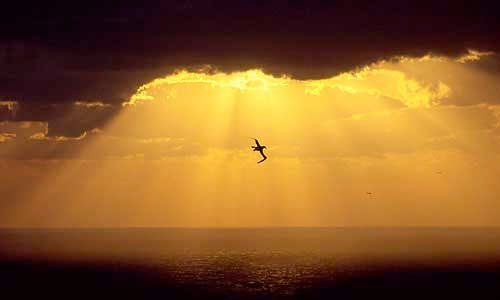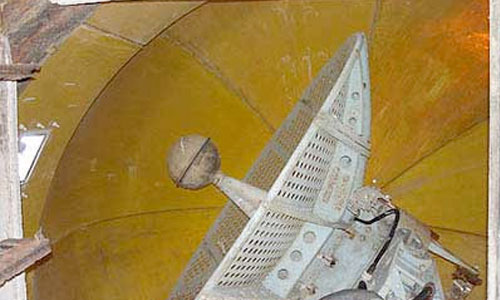Update: June 16, 2017
This page allows you to sightsee the Torishima of Izu Islands where the Yamashina Institute for Ornithology is conducting a conservation research of the Short-tailed Albatross, an endangered species. Torishima is designated as a natural treasure as a whole, and one cannot land on the island without authorization.
Bird view of Torishima Island
It is an uninhabited island located approximately 300km south of Hachijyojima, and 370km north of Mukojima of Ogasawara Islands. The island is about 3km across and takes about 1 hour to walk across the island. Most of Short-tailed Albatrosses on this earth breed on this island. It is said that the flat areas of the island was filled with Short-tailed Albatross during the Edo-era (1603 - 1868). Wonder what the view of the island was like then?
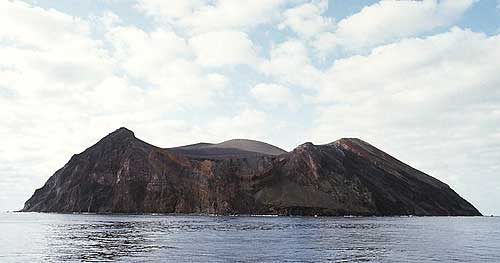

Greeted by Black-footed Albatrosses
Once you land on the island, Black-footed Albatrosses, the little brothers of Short-tailed Albatrosses welcome you. It makes you realize that this is "Torishima (Bird Island)" where birds are the central characters.
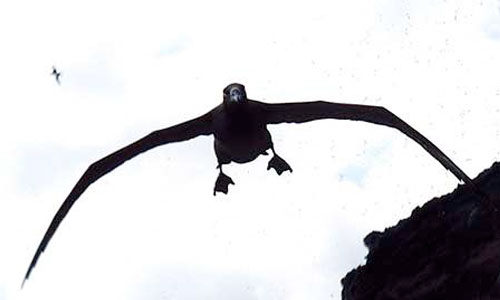

Ruins of the Torishima observatory
Japan Meteorological Agency's Torishima observatory was established in 1947 where staff was stationed for 18 years until the evacuation due to series of earthquakes in 1965.
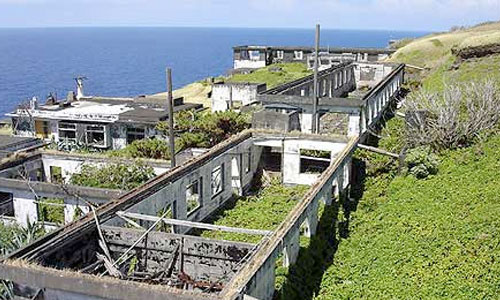
(Photographed by Tanaka Fumio)

Evidence of lives
The observatory became a ruin after the evacuation in 1965 but there are still evidences of people living on the island. The photograph is a chair used in a barber.
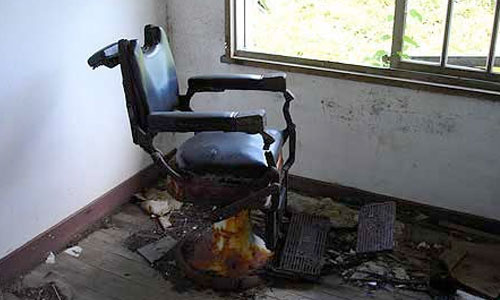
(Photographed by Tanaka)

Decoy installation area in Hatsunezaki
This is where the decoy operation is being carried out by Yamashina Institute for Ornithology to recover the short-tailed albatross population. It is gently sloped and has dense vegetation with stable soil. If many albatrosses breed here the breeding success is expected to improve significantly.
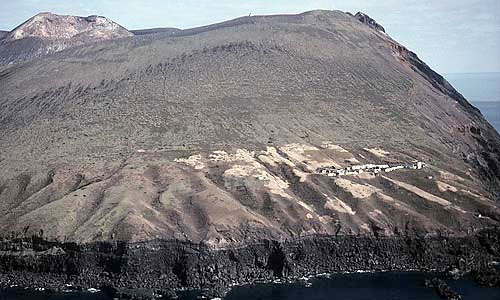

Solar battery panels installed in the slope of Hatsunezaki
Ordinary source of electricity does not exist in the uninhabited island of Torishima. The sound equipment used to decoy Short-tailed Albatrosses is powered by electricity generated by a solar battery panel.
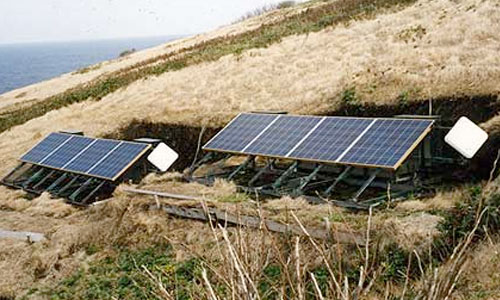

Cabin of Yamashina Institute for Ornithology
The staff of the Yamashina Institute for Ornithology engaged in the Operation Decoy stays in the earthquake recording room in the ruins of the meteorological observatory, which is kept in a relatively good condition.
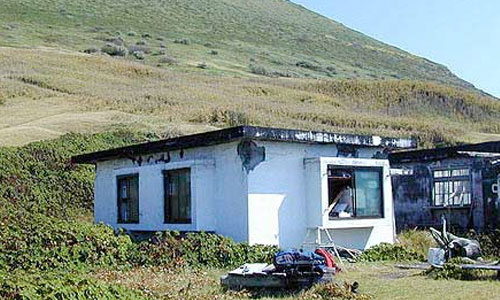
(Photographed by Tanaka)

Gaku-ajisai
There are some shrubs on the slope where Gaku-ajisai Hydrangea macrophylla form. normalis is in bloom in May.
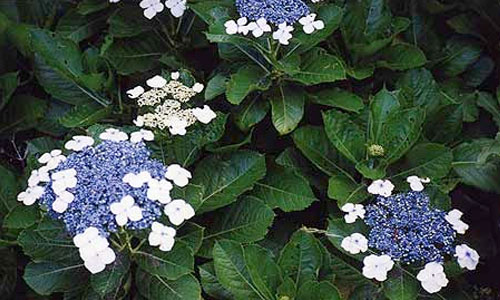

Iso-giku
Iso-giku Chrysanthemum pacificum found along the coast show beautiful yellow flowers during the fall season.
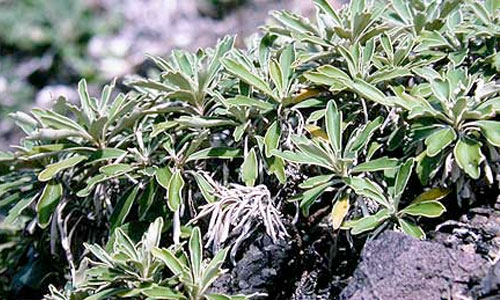
(Photographed by Saito Yasuyuki)

Raseita-so
Raseita-so Boehmeria biloba of the Nettle family is commonly seen on the island. The Japanese name "raseita" comes from an old Portuguese word "raxa" meaning a kind of woolen textile. The name comes from the texture of the leaves that are thick and feel as if their surface is coated by fur.
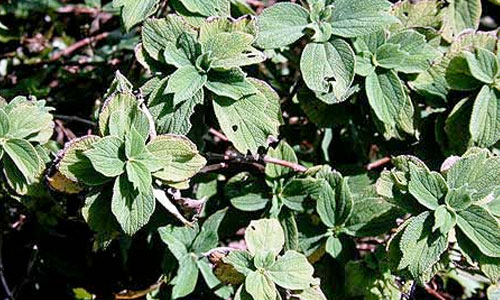
(Photographed by Saito)

Atsuba-sumire
Flowers of Atsuba-sumire Viola mandshurica var. boninensis can be seen from February to April. It is a variety of SumireViola mandshurica, a violet species distributed in North-eastern Asia, that is found along the coast of the southern Honshu, Izu and Ogasawara Islands.
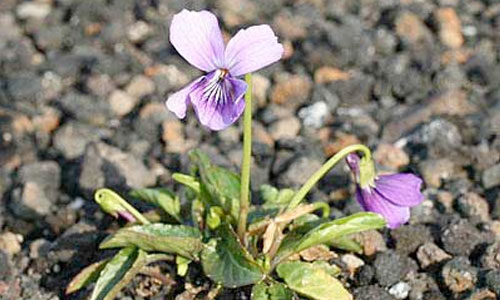

Sharimbai
The beautiful flowers of Sharimbai Rhaphiolepis umbellata, an evergreen shrub of the rose family, bloom in April.
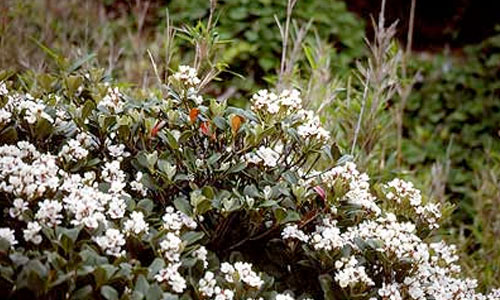

Hama-omoto
Hama-omoto Crinum asiaticum of the amaryllis family seems to have been introduced into this island by people, but they bloom with beautiful flowers.
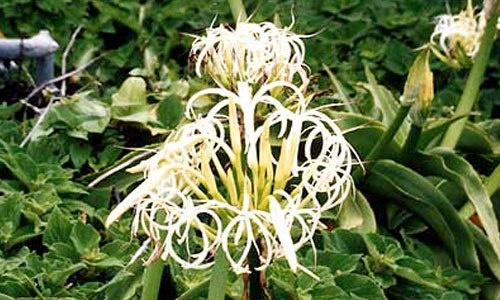

Dolphins
Bottlenose Dolphins and Humpback Whales can be seen in the sea.
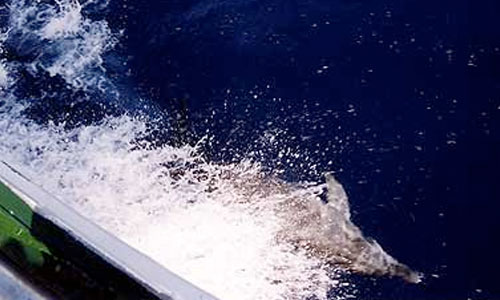

Migratory birds take a break
Rare visitors can be found in Torishima especially during the migratory season of spring and fall. It is a photograph of a rare Chinese Sparrowhawk Accipiter soloensis taken in October 2003.
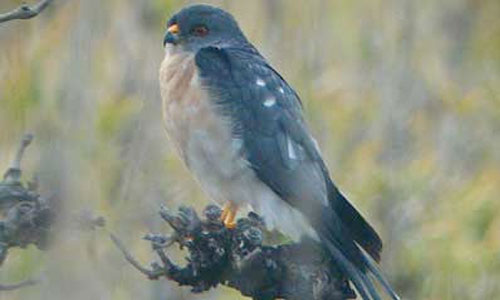
(Photographed by Tanaka)

Black Rats
Black Rats Rattus rattus are currently infesting the island but they did not exist when the meteorological observatory was in operation. It was probably introduced in the 1970s. Because of these Black Rats, Tristram's Storm-petrels Oceanodroma tristrami, a seabird endemic to Japan, that used to breed in large numbers, greatly decreased on the island. Removal of Black Rats is desired for recovery of Torishima's ecosystem.
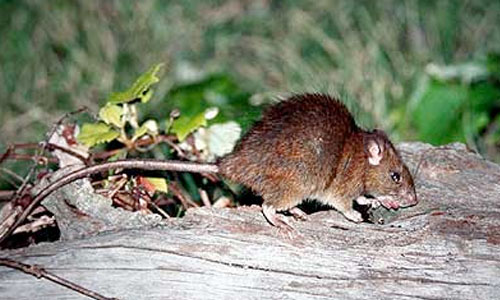
(Photographed by Osawa Yasuo)

A family of Black-footed Albatrosses
The Black-footed Albatross is slightly smaller than the Short-tailed Albatross, and is like a little brother of the Short-tailed Albatross. In May 2003 breeding of approximately 1500 pairs of Black-footed Albatrosses was confirmed.
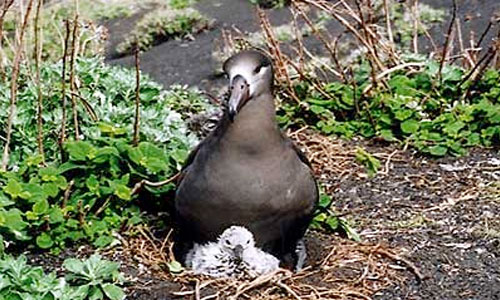

Dome of Torishima observatory
Torishima was the frontline of typhoon observation when Ogasawara was under U.S. rule after the war.
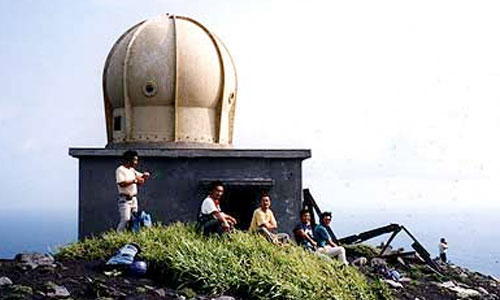

Lava flow in Meiji-era (former Tamaoki Village)
Lava flow from the eruption in 1902 in the Meiji-era, found in the north of the island. There used to be Tamaoki Village where people engaged in feather harvesting lived. All of the 125 villagers were swept by the lava flow.
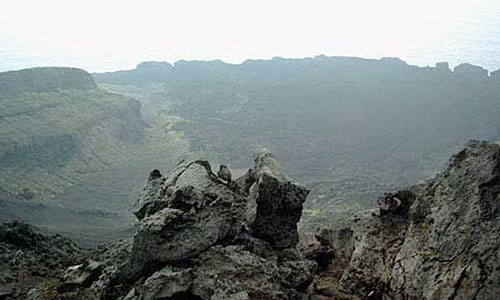
(Photographed by Tanaka)

Asahi Ball Park
A large and flat space called Asahi Ball Park bounded by Mt. Iou, the central cone of the volcano, and Mt. Asahi, the outer mountain. The meteorological observatory staff may have named it so because it is such a large ground.
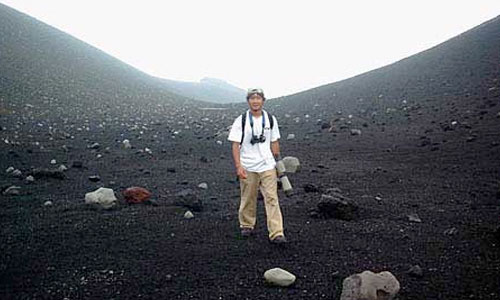
(Photographed by Tanaka)

Volcanic bomb
A large volcanic bomb found in the Asahi Stadium. It has a record-level size according to volcano specialists.
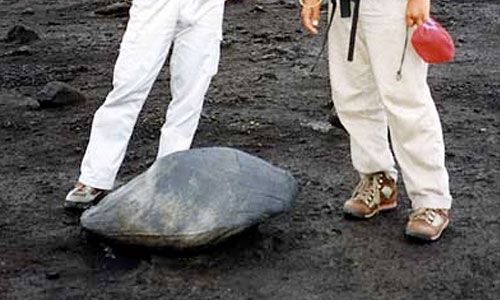

Mt. Iou
It is the central cone of the double volcano and is the highest mountain on the island at 394m above sea level. A small-scale eruption occurred in August 2002.
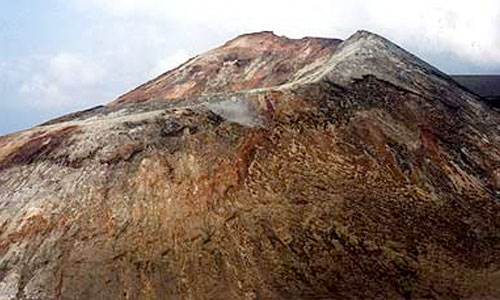
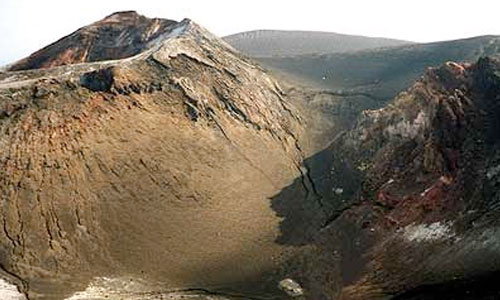

Bird view of the Tsubamezaki breeding ground
Tsubamezaki, the breeding ground of Short-tailed Albatrosses located in the southeastern tip of the island, is steep sloped and is surrounded by cliffs. The few survivors of the Short-tailed Albatross may have been protected from the feather collectors by these cliffs.
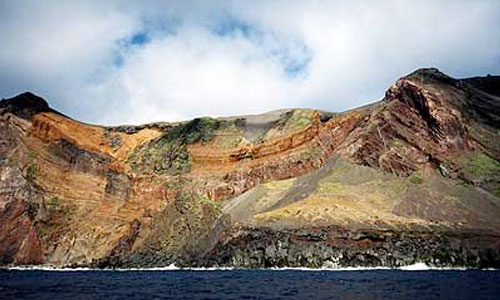

Going down the cliffs of Tsubamezaki
Researchers carefully go down the cliff towards Tsubamezaki, the breeding ground of Short-tailed Albatross.
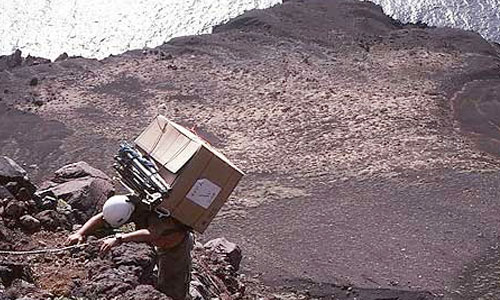

Breeding ground of Tsubamezaki
This is the breeding ground where a few Short-tailed Albatrosses were rediscovered in 1951. In order to stabilize the soil, Ministry of the Environment and the Tokyo Metropolitan Government have been implementing earth retaining works. Approximately 270 breeding pairs are confirmed as of November 2002.
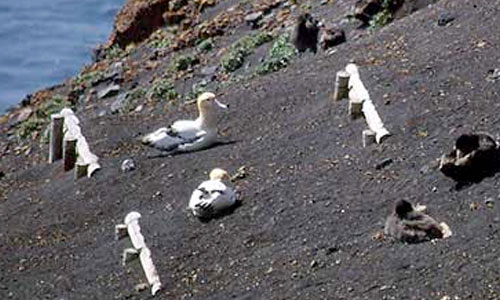

Raft of Short-tailed Albatrosses
One can often find a raft of Short-tailed Albatrosses in the sea off the breeding ground of Tsubamezaki.
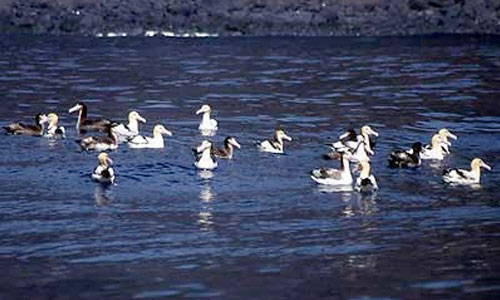

Luxury cruise ship (Hatsunezaki)
When staying in the island for research, one may find a cruise ship circling around Torishima. The researchers camping in Torishima are envious of the life on the luxury ship with cold beer and delicate food, but perhaps the passengers on the ship are envious of the researchers who live away from the noisy world.
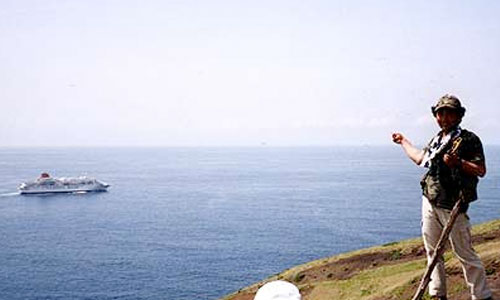

Sunset at Hatsunezaki
On a sunny day, a beautiful sunset announces you the end of the day in this isolated island.
